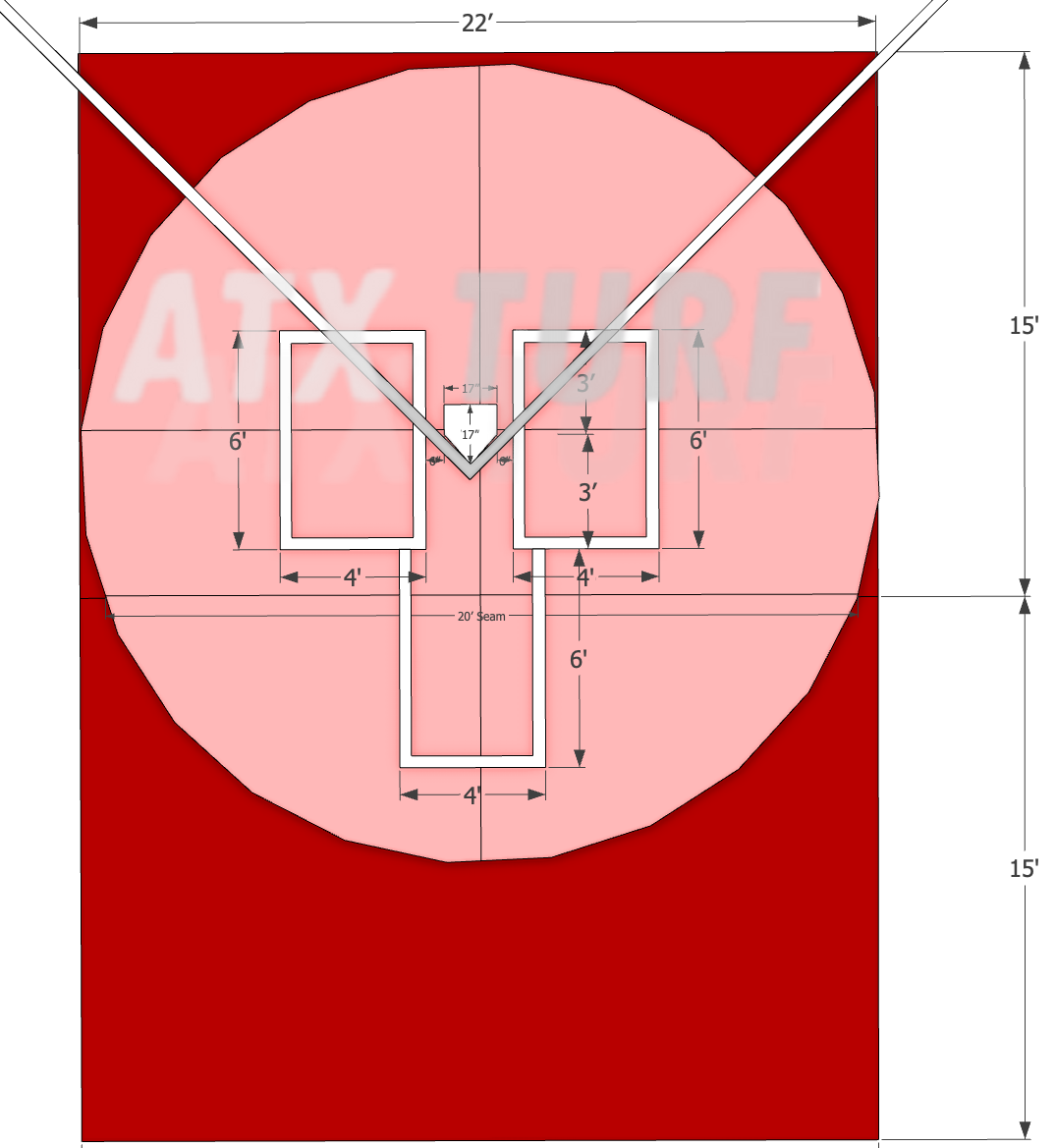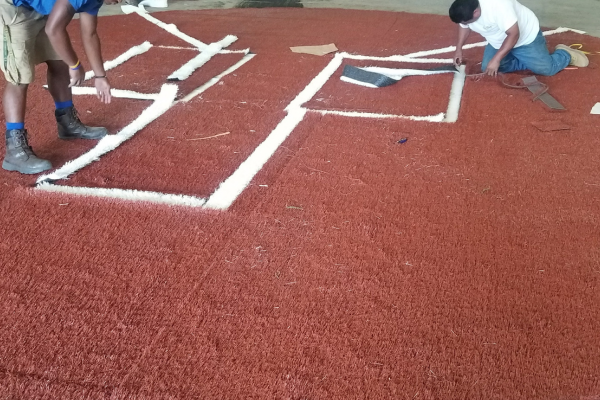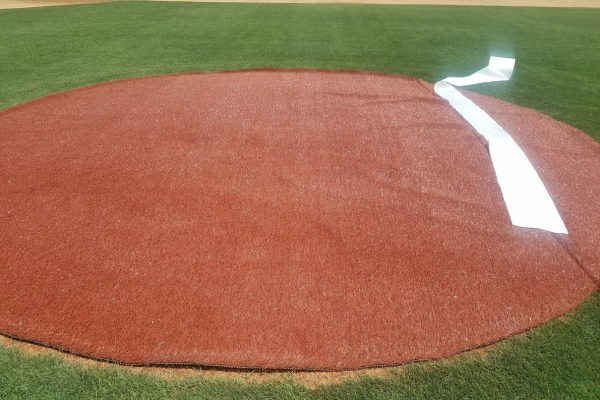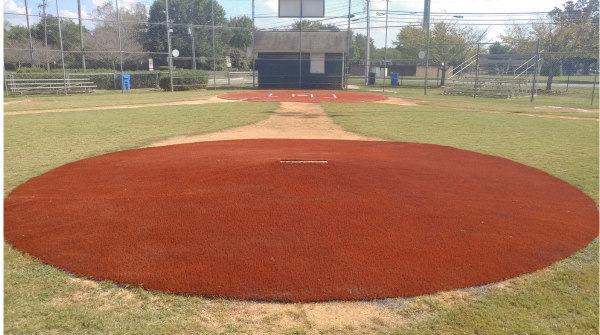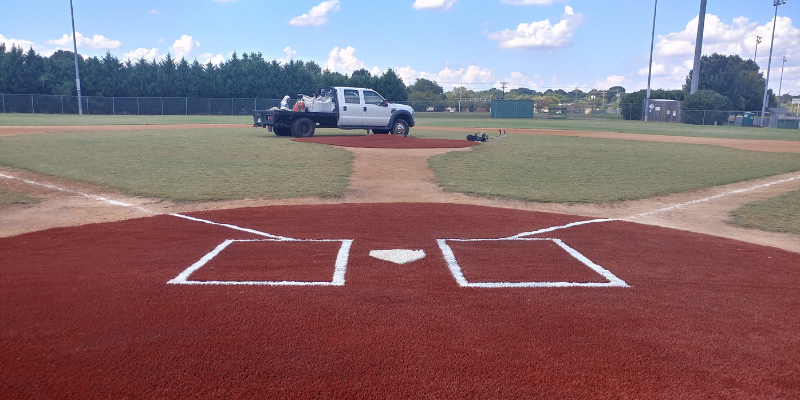
How to Turf a Batter’s Box and Field Pitching Mound
Published June 30, 2025
Many Schools and Leagues simply don’t have the budget to turf an entire field or even the infield. There are, however, other economical solutions that can improve maintenance costs, time and appearance.
This article discusses how the ATXTurf team fabricated a batter’s box and pitching mound from turf and delivered it to a school in North Carolina.
(As a note, this was a one-off project, which took some time and given the proximity, the low travel costs made it possible. It’s unlikely we will travel to most states for a job this size, but we are happy to supply the turf and materials to schools or leagues who are in DIY mode.)
Batter’s Box Turf
Let’s start with the batters box. On this field, this batter’s box was 22’ feet in diameter, and as you may know, our turf comes primarily in 15’ wide rolls. So the trick here was to take two pieces of clay colored turf, 15’ wide, put them together, and make a 22’ circle.
The image below is the project design.
The Seam
This creates an inevitable seam somewhere in the circle. The trick is to place the seam where there is less foot traffic and easier to repair if need be down the road.
In this case we ran it along the inside of the batter box line where there is already a seam from piecing in the white lines.
Batter’s Box Lines
The white lines of the box are simply 4 inch strips cut out of a piece of white turf with the same pile height as the clay colored turf. It means purchasing a small piece of white turf. Using a box cutter, simply cut 4 inch strips out of the white roll, which is typically 8 to 10 stitch rows depending on the tuft gauge of the turf.
Use a measuring tape to cut the batter’s box rectangles out of the clay turf according to the batter’s box dimensions in this diagram. These are regulation high school and up dimensions, while Little League boxes are only 3 feet wide, instead of 4 feet wide (including the lines themselves.)
Once everything is cut out, place the white lines clay turf, stake them into the ground to hold them in place, then connect with glue and seam fabric, just as turf seams are typically connected. Visit the ATXTurf Instruction Videos page for detailed videos on seaming turf.
Pitching Mound Turf
For the pitching mound turf, the same idea applied. This mound area was 18’ wide, so a circle was cut from 2, 15’ wide by 18’ long rolls of turf, placing the seam 3 feet off the edge of the mound. The seam was placed on the back of the mound, as naturally, that’s where the least wear occurs.
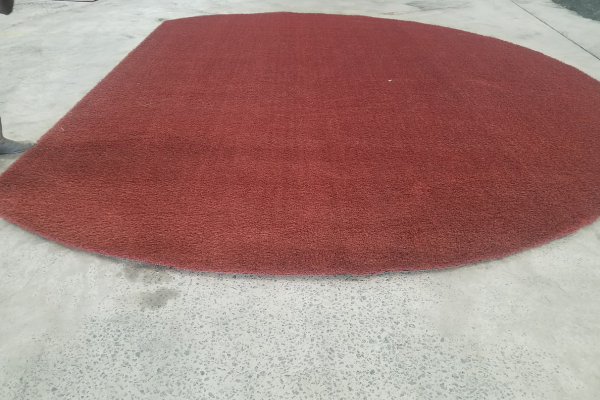 |
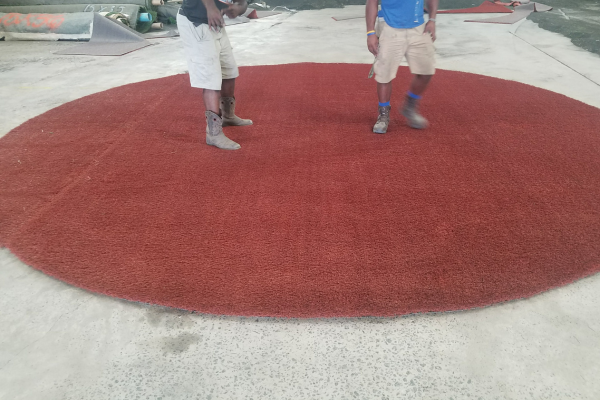 |
It would be a mistake to take two 15’ wide rolls of turf, put them side by side and then cut a circle out of the middle because that would leave your seam in the dead center of the mound, right where the pitcher’s stands or the feet land.
The pieces were seamed together on site. As you can see below, wrinkles occur when you try to lay turf over a mound, or any uneven surface. The best way to eliminate the wrinkles is to consolidate the smaller wrinkles into one larger wrinkle, create a relief slit in the top of the wrinkle, cut out the excess turf out and seam the two sides back together. After the glue has dried, brush in rubber infill and this will also help it lay flatter.
Below is a picture from a different but similar project.
How does the turf stay in place?
Roughly 4 lbs of rubber Infill was brushed into the turf giving it enough weight to keep it down, while the edges were simply staked into the ground with 12’ inch metal spikes. Sand can also be used to brush in and is more readily available in any town.
Typically we would recommend using nailer boards buried in the ground and staple the turf to it, as is typically done on athletic fields. However, in more temporary DIY projects on a budget, this method works just fine and is a vast improvement over the previous playing surface.
We hope this helps folks who are in need of improving particular areas but are not in a position to turf entire fields. As always, feel free to order green, clay or white turf from the ATXTurf.com website or reach out to a rep.

